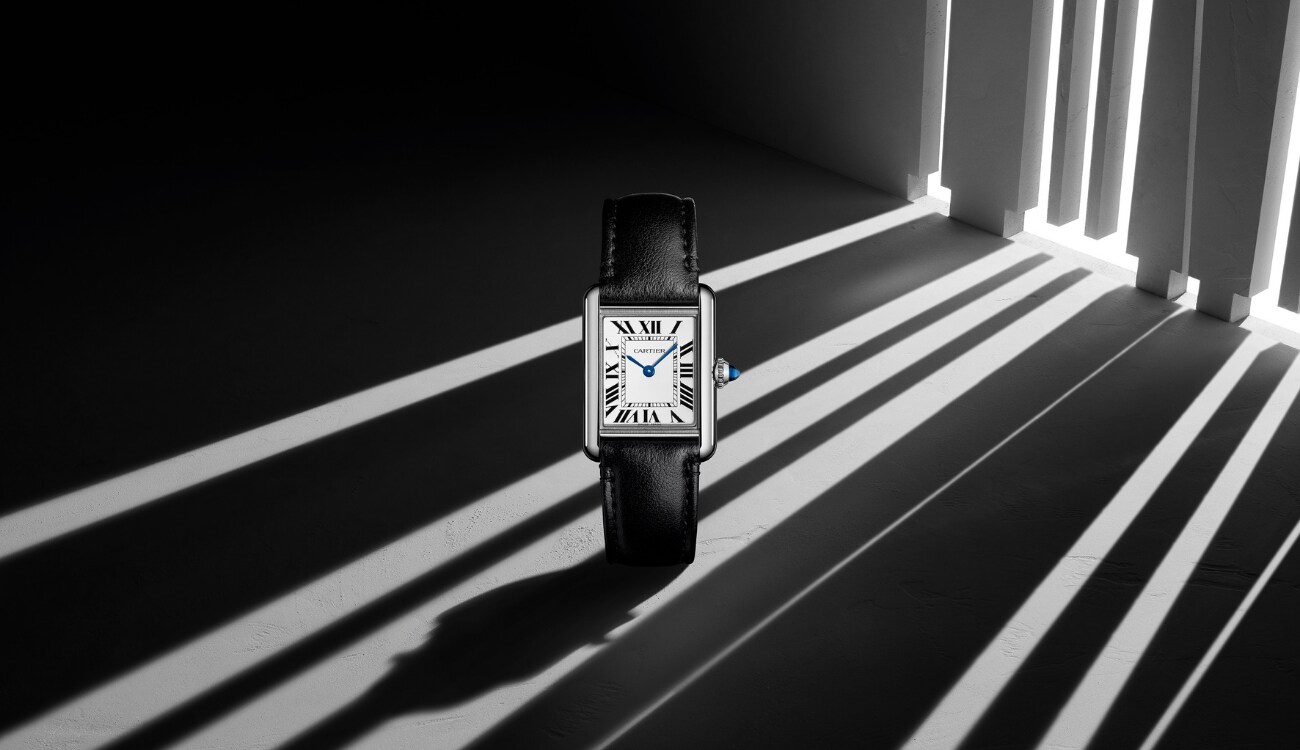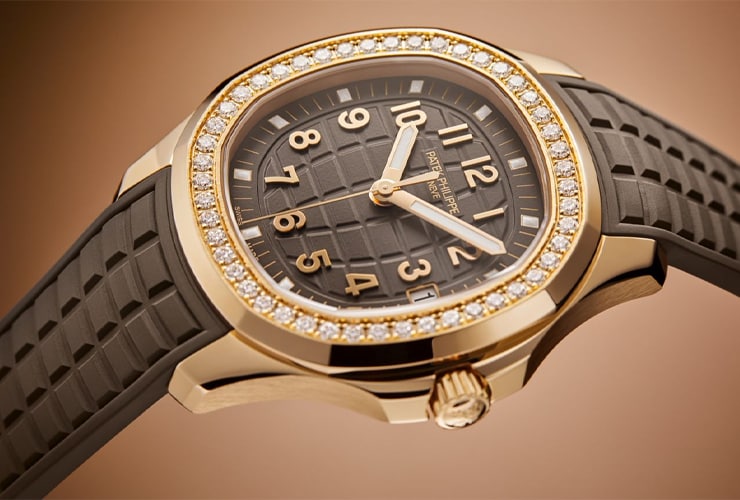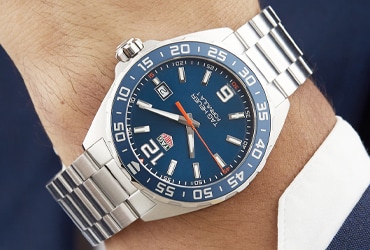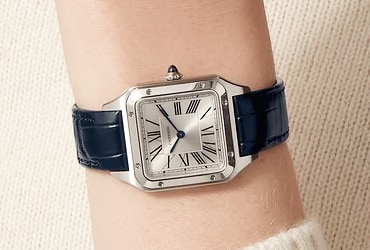
For many, the lockdowns of the past two years created the perfect time-out to reassess every area of life – including personal buying habits in relation to a product’s impact on the environment. The luxury industry did not escape this cross-examination and consumer power forced brands to step up their sustainability initiatives and become more transparent in their goals for corporate responsibility. And interestingly, the ultra-traditional world of horology has proven itself to be somewhat of a trailblazer when it comes to green credentials.
For many, the lockdowns of the past two years created the perfect time-out to reassess every area of life – including personal buying habits in relation to a product’s impact on the environment. The luxury industry did not escape this cross-examination and consumer power forced brands to step up their sustainability initiatives and become more transparent in their goals for corporate responsibility. And interestingly, the ultra-traditional world of horology has proven itself to be somewhat of a trailblazer when it comes to green credentials.
Long before concerns over ocean conservation came to the fore, watch brands – especially those with genuine diving and marine links – were (and continue to be) conscious of the need to preserve the health of the world’s seas. As the inventor of the waterproof Oyster case, Rolex’s support of Dr Sylvia Earle’s Mission Blue organisation is a natural fit, while Omega’s partnership with oceanic exploration charity Nekton befits the legacy of its Seamaster collection. Both Blancpain and Ulysse Nardin are promoting shark preservation – the former through its longstanding Ocean Commitment initiative, the latter via a partnership with the charity OCEARCH. Carl F. Bucherer is a long-time patron of UK-based charity Manta Trust, Certina currently works with the Florida-based Sea Turtle Conservancy (STC), and Seiko is backing the Marine Debris program that sees diver training organization PADI mapping seabed detritus.
Supply chains are also being addressed by the majority of watchmakers who are turning away from virgin raw materials in favour of responsibly-sourced, ethical and recycled ones. For the past decade, Chopard has led the way in Fairmined gold from small, artisanal mines that actively promote environmental protection, safe working conditions and social development, while the Positive Luxury Butterfly Mark displayed by IWC is an independent symbol that the company makes a considerable effort to achieve sustainable and ethical practices.
In jewelery and watchmaking, precious metals and gemstones have always been recast and reset, and this practice is now spreading to less noble materials. Coinciding with the announcement of its partnership with the UNESCO initiative Ocean Decade, Panerai introduced a watch with more than half of its weight made up of recycled materials, including the brand’s proprietary recycled eSteel. Oris, an ongoing advocate of World Cleanup Day, has taken its commitment more literally using recycled PET plastic to create the unique dials for its Aquis Date Upcycle models.
Beyond the watches themselves, reclaimed paper, cardboard and cork are being used for packaging, while repurposed plastic, fabric or leather straps are being championed by the likes of Tom Ford, Christopher Ward and Breitling. And taking strap sustainability to new levels of glamor, Zenith has partnered with LVMH start-up Nona Source, which takes offcuts from the group’s fashion and leather goods brands and turns them into distinctive and luxurious watch bands.
Possibly one of the most innovative horological eco launches of the past 12 months, however, is the Must de Cartier Tank SolarBeat that aims to repeat the achievements of all the namesake models that came before it in rewriting the rulebook for a luxury watch.
Following its 1917 debut, the Tank was made in highly limited numbers in gold or platinum, but as the influx of increasingly cheap quartz timepieces threatened to decimate the mechanical watch industry in the 1970s, Cartier challenged itself to make more affordable watches that still reflected the core values of the maison. To this end, Must de Cartier launched in 1977 as a must-have watch at a cost of just $500.
While the dimensions and profile stayed true to the original, the watch cases were gold-plated silver and, although some were manual-wind, the majority were powered by a high-quality quartz movement. The overall simplicity allowed the watches to be mass produced and by the end of the 1970s Cartier’s sales had increased exponentially. However, despite their commercial success, a company decision to reclaim the ultra-exclusive nature of the brand meant that, by the mid-2000s, the Must was discontinued.
The following years saw Must de Cartiers become highly collectable and increasingly hard to find, and it was, therefore, a hugely welcome move when, last year, Cartier announced the return of the collection with several different models – including the headline-grabbing SolarBeat. Available in two sizes – small (29.5 x 22mm) and large (33 x 25.5mm) – both just 6.6mm thick, the watch comes on a pin-buckle, non-leather Altstrap band, made by sustainable practices and consisting of 40 per cent waste material from apples grown for the food industry.
While a quartz movement is no longer an anomaly at Cartier, the SolarBeat goes one step further and represents the first time the house has used solar technology. The battery that powers the timepiece is charged by sunlight and has an estimated life of 16 years – opposed to the industry standard of two years – meaning that the watch will still be keeping good time in 2038, without any need for servicing.
With gold no longer a benchmark of horological luxury, the precious metal case has been replaced by steel but, apart from this, the SolarBeat differs very little aesthetically from the Tank Louis Cartier of a century ago. While the black-on-white face is simple, the watch bears all of the Tank signatures – from the Roman numerals, blued-steel sword-shaped hands, extended brancards and cabochon-set crown to the famed secret signature on the dial.
Below the face is a photovoltaic cell, which converts light into electrical energy that is stored in a rechargeable battery. The light that powers the photovoltaic cells passes through the dial via invisible perforations within the Roman numerals. Enabling enough light to pass through in order to charge the battery was one of the biggest challenges that faced Cartier’s R&D team and the innovation took two years to perfect.
Although the photovoltaic technology employed by Cartier will ensure an eight-fold reduction in battery usage, what is equally impressive is that this Tank is a dead-ringer for its more formal gold and platinum mechanical cousins – yet its steel exterior, 30-meter water resistance and fuss-free timekeeping make it the perfect, elegant, everyday watch at a fraction of the price.
Discover our full range of brands here at The Watches of Switzerland.
















